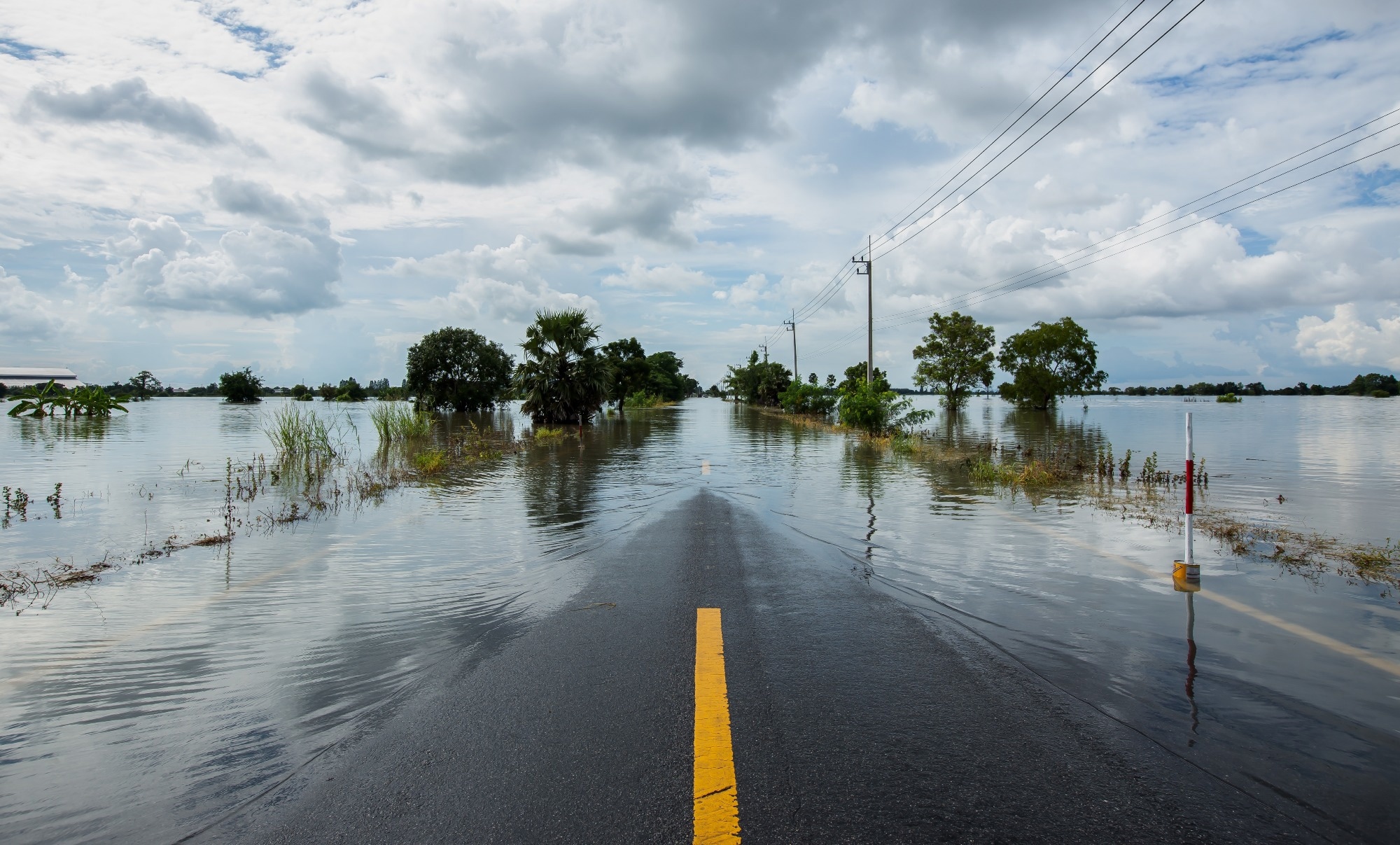In a paper published in the journal PLOS ONE, researchers introduced a novel method to identify critical road segments within transportation networks swiftly. A graph neural network (GNN) prioritized road segments based on their importance for network resilience, leveraging training on various network disruptions.
 Study: GNN-Based Edge Ranking for Rapid Post-Disaster Recovery. Image credit: weerastudio/Shutterstock
Study: GNN-Based Edge Ranking for Rapid Post-Disaster Recovery. Image credit: weerastudio/Shutterstock
This approach addressed limitations in assessing network changes and recovery sequencing after disasters while circumventing computational challenges in large networks. The method aided planners and emergency managers by rapidly guiding infrastructure decisions and enhancing network resilience, as demonstrated across synthetic and real-world transportation networks.
Related Work
Roads are vital for efficient transportation, yet they face increasing challenges due to climate-induced hazards like floods and fires. These events disrupt traffic, resources, and safety, as seen with hurricane Katrina's aftermath along the I-10/I-12 corridor. Understanding road network vulnerability is crucial to planning resources and managing risks effectively. Vulnerability analysis assesses risks and disruptions in transportation infrastructure. This process helps identify weak points, evaluate potential impacts, and develop risk mitigation strategies, informing decision-makers to enhance reliability and functionality. Traditional methods for vulnerability assessment are computationally expensive, especially when dealing with uncertainties or intentional network element removal.
GNN-based Edge Ranking Framework
The paper introduces a GNN framework designed to estimate edge ranking, aiming to ascertain the significance of each edge within a given graph structure. This GNN-based approach involves utilizing the edge adjacency matrix and a feature matrix to compute the edge ranking vector, revealing the relative importance of edges within the network. The core of this framework relies on the GNN module, which processes the edge feature matrix and two modified variants of the edge adjacency matrix. These modified matrices adapt the edge adjacency matrix based on node degree and edge weight.
The GNN module operates by aggregating features of the k-hop neighbors at each layer, employing a simple summation technique for edge feature vector aggregation. Within the GNN, each layer multiplies the feature matrix with the modified adjacency matrices. Subsequently, the aggregated edge features pass through a multilayer perceptron (MLP) unit, outputting a vector in vector space, representation embedding (RE), where each value corresponds to an edge in the network. The framework multiplies these scores together to derive the final score for each edge.
The pseudocode details the forward propagation of the GNN-based edge betweenness ranking algorithm within the framework. It includes functions to modify edge adjacency matrices based on node degree and edge weight, essential in creating unique matrices specific to the graph structures under examination. The paper introduces a ranking loss function to estimate differences between predicted edge rankings and the target edge betweenness centrality (EBC) ranking.
The paper also explores conventional edge ranking algorithms for comparative purposes, presenting two vulnerability-based network indices: efficiency-based vulnerability measures and probabilistic distance between networks. These metrics, reliant on calculations of all pair shortest paths, offer insights into network vulnerability when edges are interrupted.
Overall, the framework introduces a GNN-based method to estimate edge ranking in complex graph structures, providing insights into edge importance and vulnerability within transportation networks. This approach demonstrates correlations with established edge ranking techniques, showcasing its potential in practical applications.
Post-Disaster Infrastructure Restoration: GNN's Role
In the aftermath of disasters, swift restoration of critical infrastructure like transportation networks is vital. The proposed GNN-based approach plays a pivotal role in post-disaster recovery, swiftly identifying the most crucial road segments for immediate restoration. By leveraging pre-trained models and rapid inference, this method provides a means to expedite decision-making, which is vital in situations demanding urgent intervention.
The GNN's ability to evaluate large-scale networks demonstrated through ablation studies on various transportation networks worldwide, signifies its applicability. High Spearman correlations above 0.9 highlight its accuracy in identifying critical road segments, even when traditional vulnerability-based metrics face computational limitations. This computational advantage positions the GNN method as a valuable tool for efficiently assessing and prioritizing road segments for recovery efforts post-disaster.
Rapid identification of crucial road segments aids in allocating resources effectively, facilitating swifter restoration and ensuring the continuity of essential services. For instance, in road closures due to disasters, the GNN identifies alternate critical routes, aiding emergency response teams and minimizing disruptions to transportation networks.
Moreover, the method's efficiency enables real-time analysis, allowing decision-makers to adapt to changing scenarios swiftly. This capability is instrumental in immediate recovery and planning for resilience enhancement, guiding proactive measures to reinforce critical infrastructure against future disruptions.
Conclusion
To sum up, the GNN-based method balances efficiency and accuracy, offering advantages, particularly for large graphs. Its disaster recovery and maintenance applications showcase its rapid ranking capabilities in transportation. Moreover, it is a versatile surrogate for resilience studies, especially amid uncertain events like earthquakes. Future directions involve integrating demographic and traffic-related data, extending its applicability. The GNN approach holds immense promise for time-sensitive transportation infrastructure applications, emphasizing adaptability and resilience enhancement.
In conclusion, this method's adaptability to evolving scenarios makes it a valuable tool for resilience planning. Its potential integration with diverse data sources opens avenues for comprehensive transportation network analysis. Ultimately, the GNN approach is a cornerstone for efficient, responsive infrastructure management in critical times.